
A Tour of the Lachicotte Horticulture Complex

Did you know the majority of plants at Brookgreen Gardens are grown on site? The Doc and Martha Lachicotte Horticulture Complex is where you can find all the plant-growing action! Whether we’re starting seeds, taking cuttings, or bumping up plugs (small, rooted plants) to bigger sizes, there is a lot of work and space that goes into our plant production. Since the Lachicotte Horticulture Complex is not open to the public, I am here to give you a virtual behind-the-scenes tour.
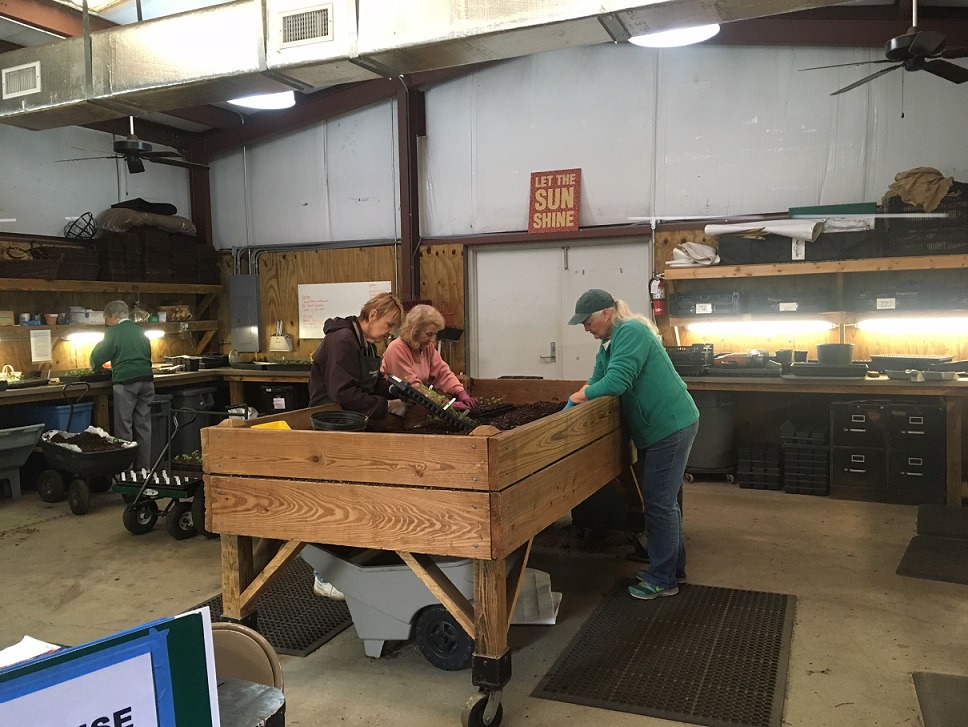
Our greenhouse complex is made up of many different sections, both inside and out. Our first stop is the head house, pictured above. This space is where our plants start their journeys through the greenhouse complex. Seeds are sown, cuttings are processed, plugs are potted, fertilizers are prepared, and research is done.
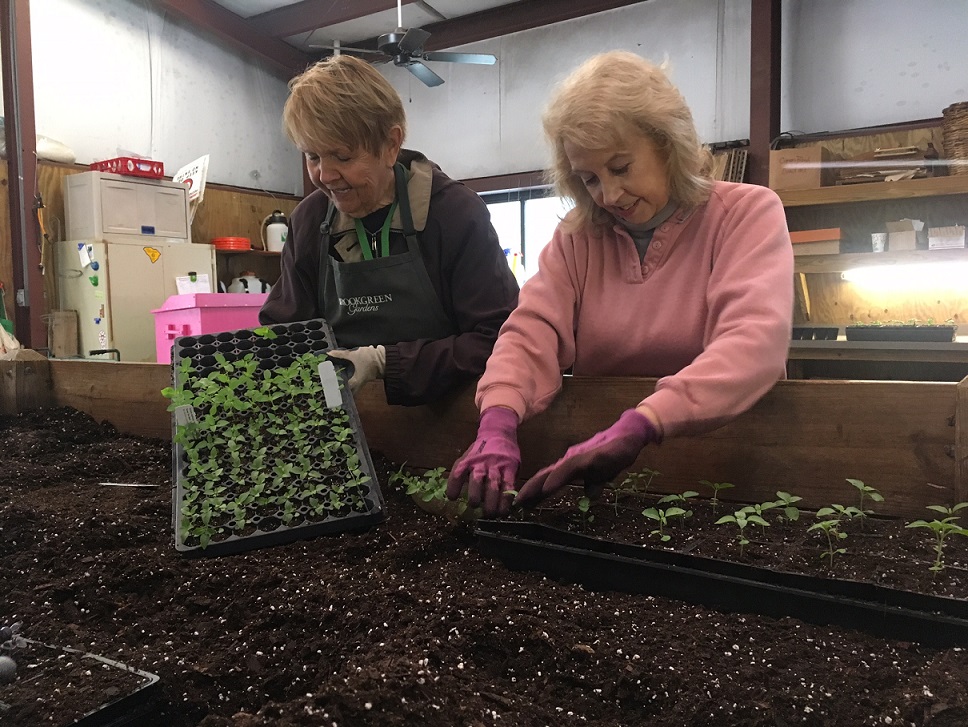
You would think there would be no need to leave the head house considering just how much goes on in there alone. Luckily, we have a dedicated core of volunteers who help facilitate many of these tasks.
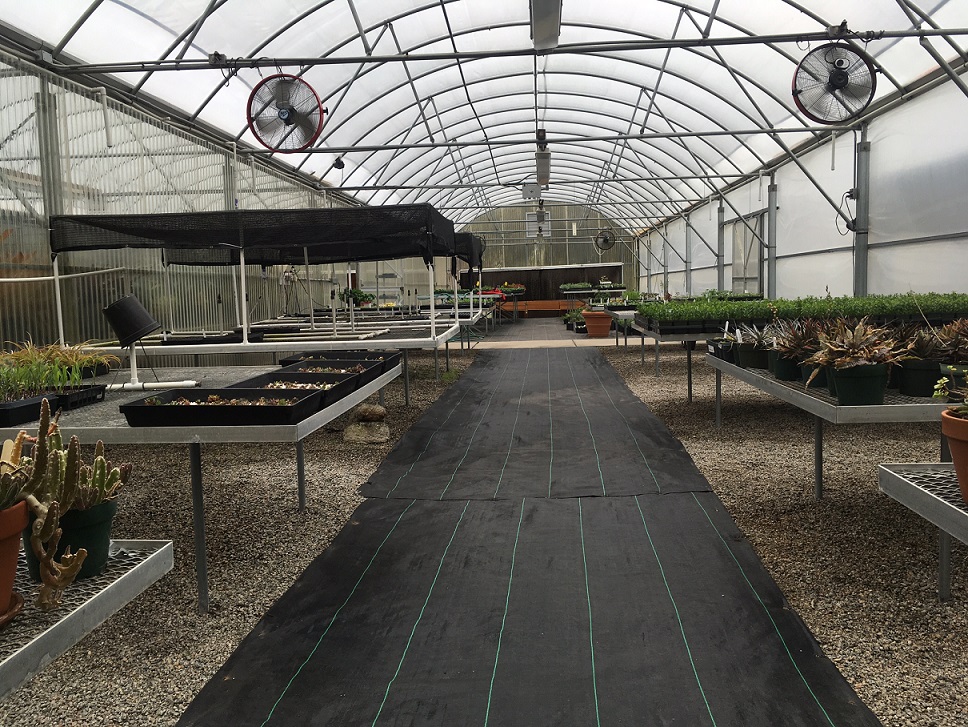
As we continue on our tour, we enter Bay 1 of the greenhouse. This is our young plants’ next stop. Seed trays are gently hand watered to assure the seeds do not wash out and misting tables are set on timers to keep cuttings and seeds moist. While this area plays an important role in the development of our young plants, it also houses our mother plants (plants we use to make more plants, generally through cuttings) and even succulents.
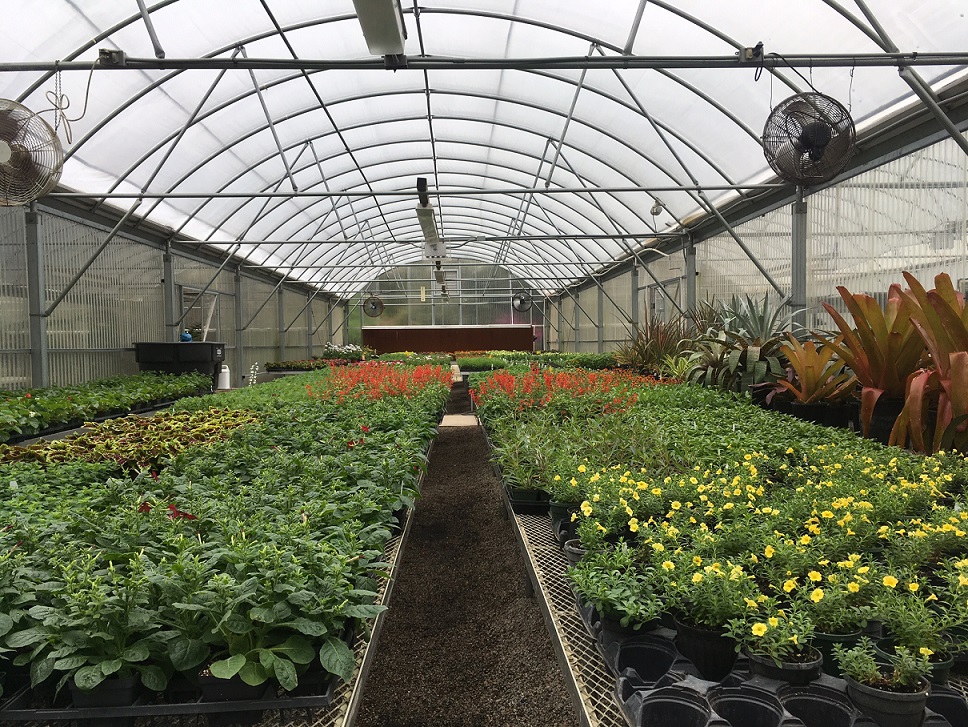
As we slide open the doors from Bay 1 to Bay 2, we are overwhelmed with color! Bay 2, as seen above, is filled to the brim this time of year. Plugs and established seedlings that have been bumped up to four inch pots are placed here as they continue to grow into their new, larger homes. The one thing you’re missing from this virtual tour? The smell of fish filling the Bays, no pun intended! We use organic fertilizers, like fish emulsion, in our greenhouse. It works wonders and gives the plants the luxury treatment, and even though it smells fishy, we highly recommend!
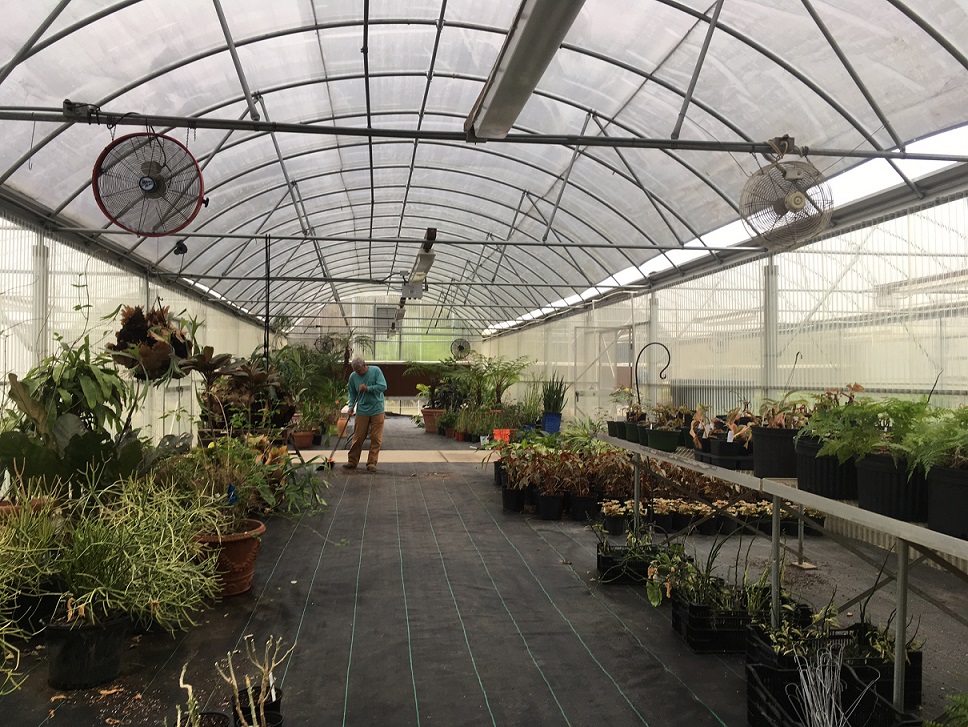
Where do all of the tropical plants go when it gets cold? Things like our White Batflowers, large Staghorn Ferns and other tender Begonias, come back to Bay 3. The warmth of the greenhouse protects them from the cooler weather. As we work our way further into spring, they will start to make their appearances back in the gardens.
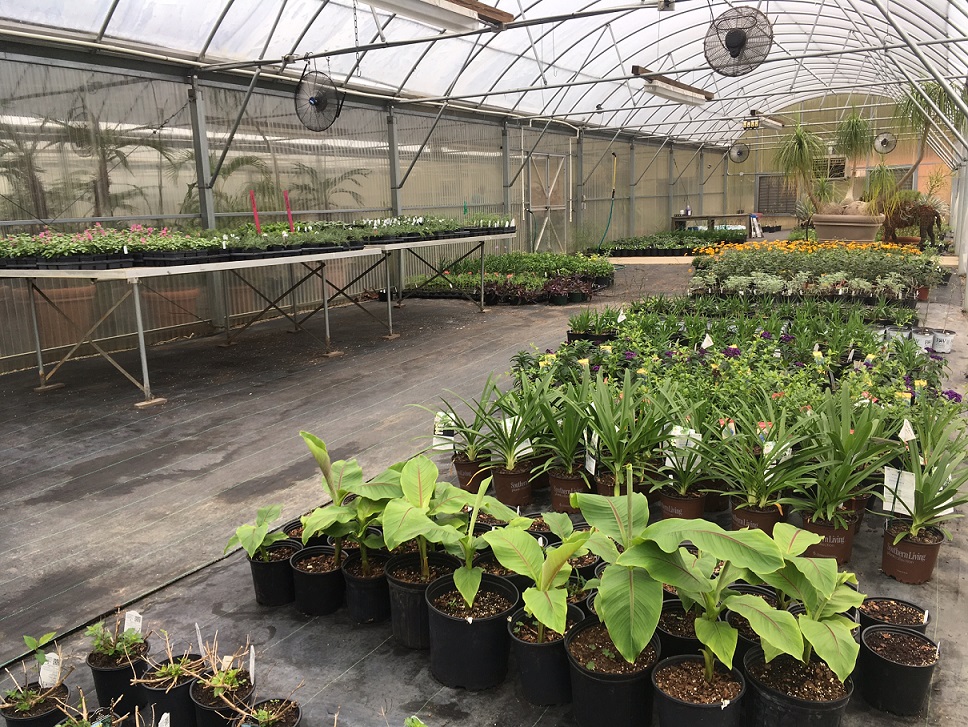
Bay 4, the final bay in the greenhouse, is where we have many of our plant sale plants stored. These plants are often annuals we have been growing or ordered in that are not able to withstand the cold. They share this space with larger plants (bigger than four inch pots) that are waiting to go out into the gardens. All of our greenhouse bays have spigots and hoses. All of the bays, except for the misting tables in Bay 1, need to be watered by hand.
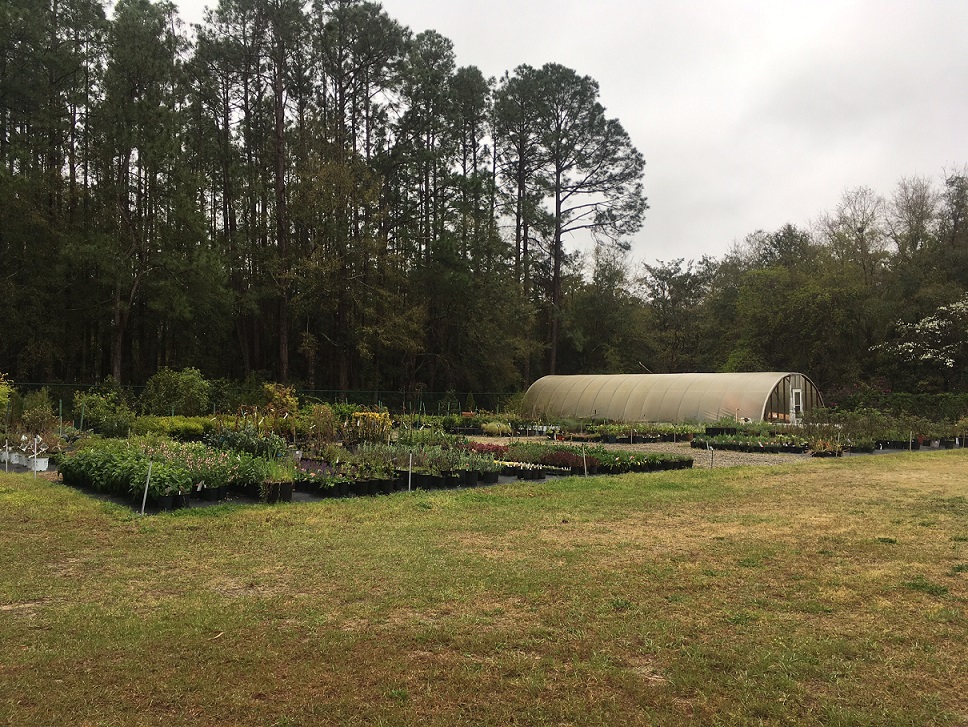
Behind the greenhouse is the sun nursery, pictured above. Mats of plants, both for plant sale and garden use, are stored here. Plants range from herbaceous perennials to trees and shrubs, but all are sun-loving. When the weather warms up, tender sun plants in the greenhouse bays will also work their way out here. Each mat is under scheduled irrigation. Imagine trying to water all that by hand!
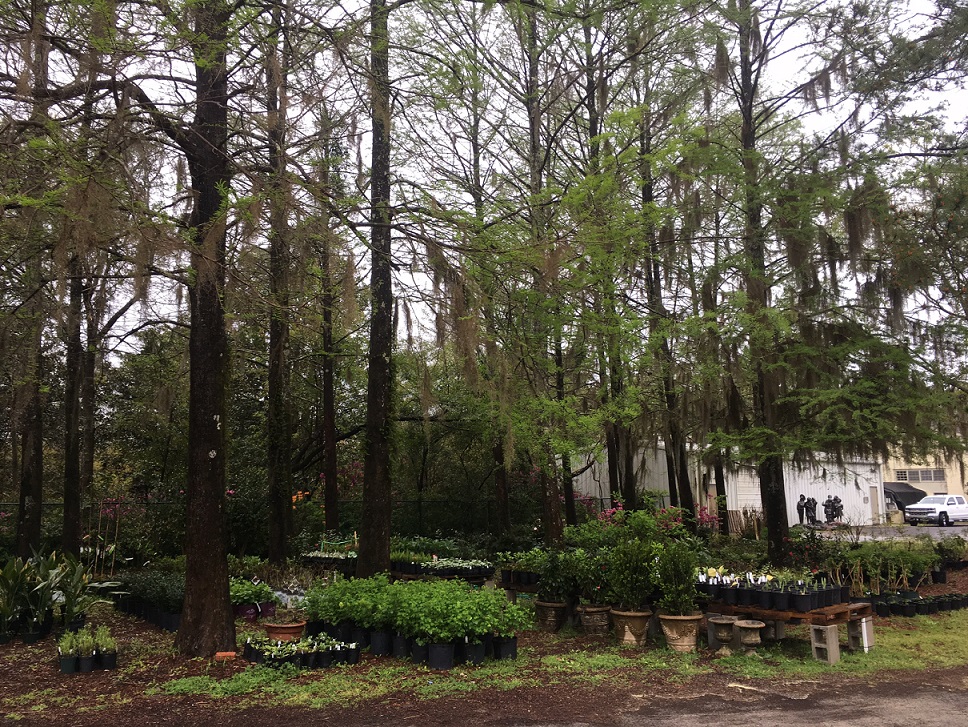
Next up is the shade nursery. Like the sun nursery, these plants are also herbaceous perennials, trees, and shrubs for the gardens and plant sales. Tender shade plants make their way out of the greenhouse and into the shade nursery once the weather gets warmer. Irrigation is also available outside on raised, rotating sprinkler heads. While not on a timer, all you need is a few quick twists of the wrist and the plants are watered.
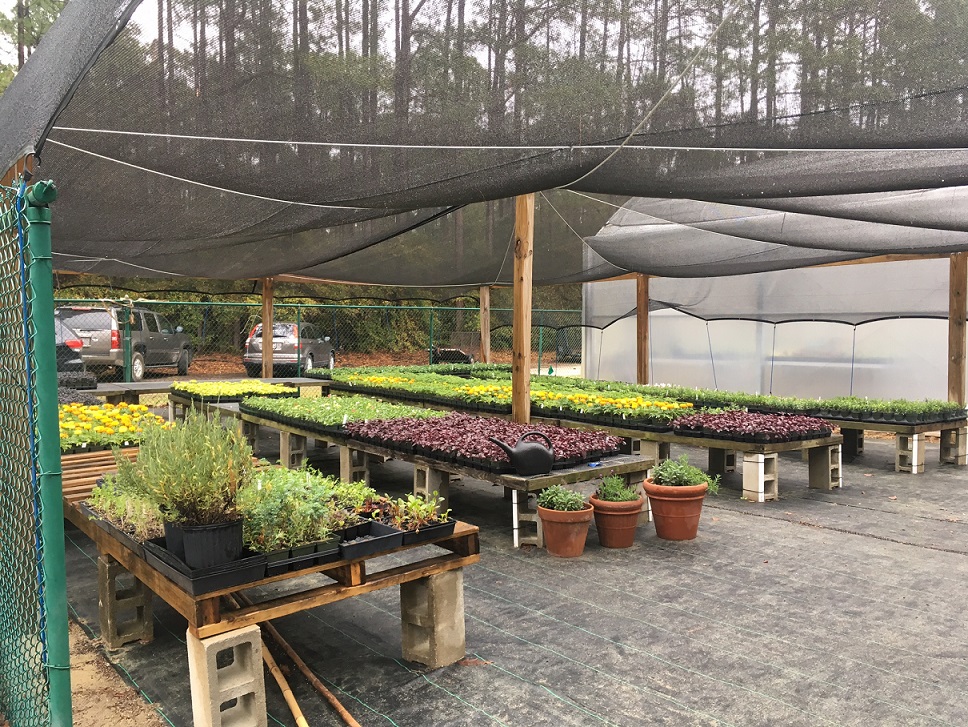
Before we move plants from greenhouse into the gardens, they take a quick stop at our side yard. This brief respite is important to help the plants acclimate to the outdoor weather. Like so many of my transplant brothers and sisters know, it’s tough getting on a plane in South Carolina in the winter and getting off that plane in New York – it’s cold and we’re not ready! It’s no different for plants. The side yard, above, is a protected spot that lets them get used to the weather outside. For them, it’s like putting your coat on before you leave the plane.
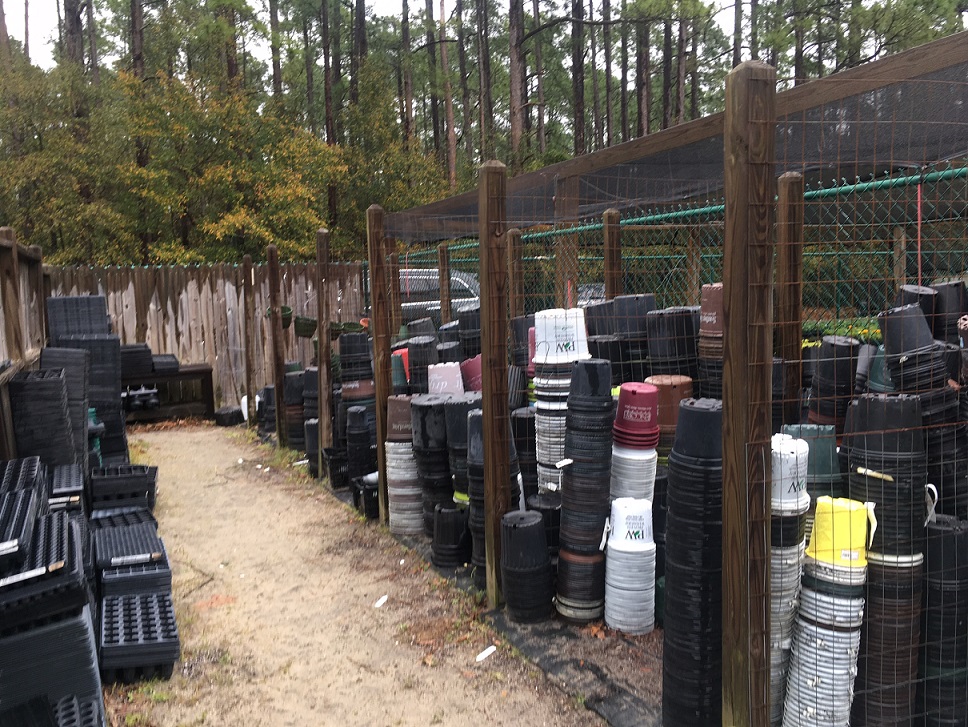
It’s almost easy to forget that pots are in hot demand at a greenhouse. Ours are stored next to the side yard. Like pots are kept together as divided sections give way to the next size of pots. Seed trays, plug containers, four inch pots, gallon pots and upwards are all stored here.
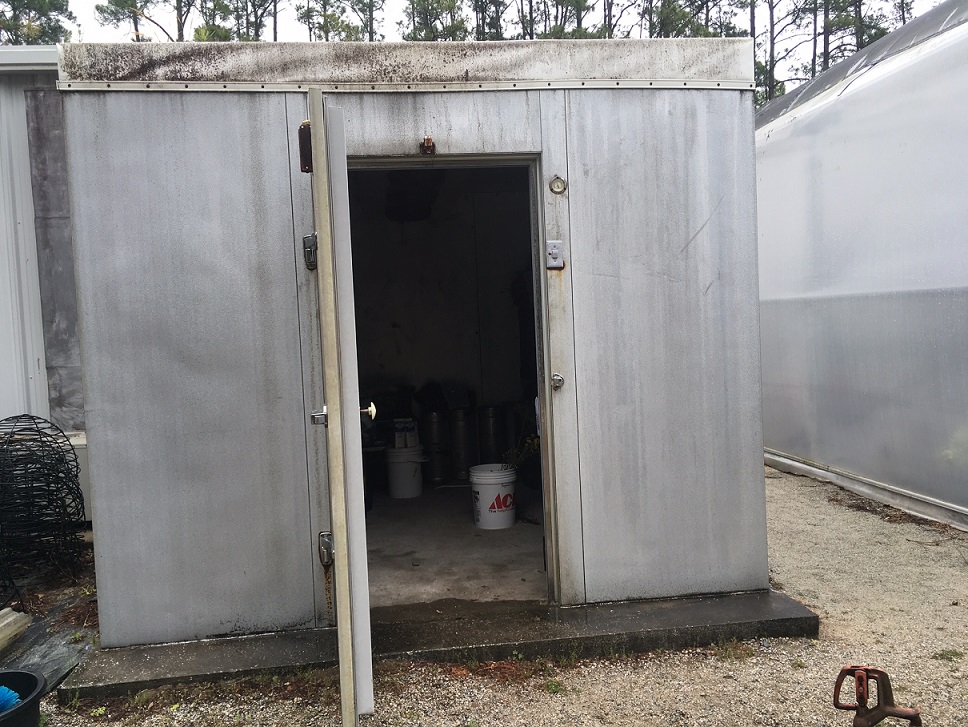
As we near the end of our tour, we have one last stop – the cooler. Our cooler is right next to the head house. This space is used to store flowers for arrangements, as well as to cool seeds. Some plants require their seeds to go through a chilling period and we can achieve this artificially by placing them in the cooler.
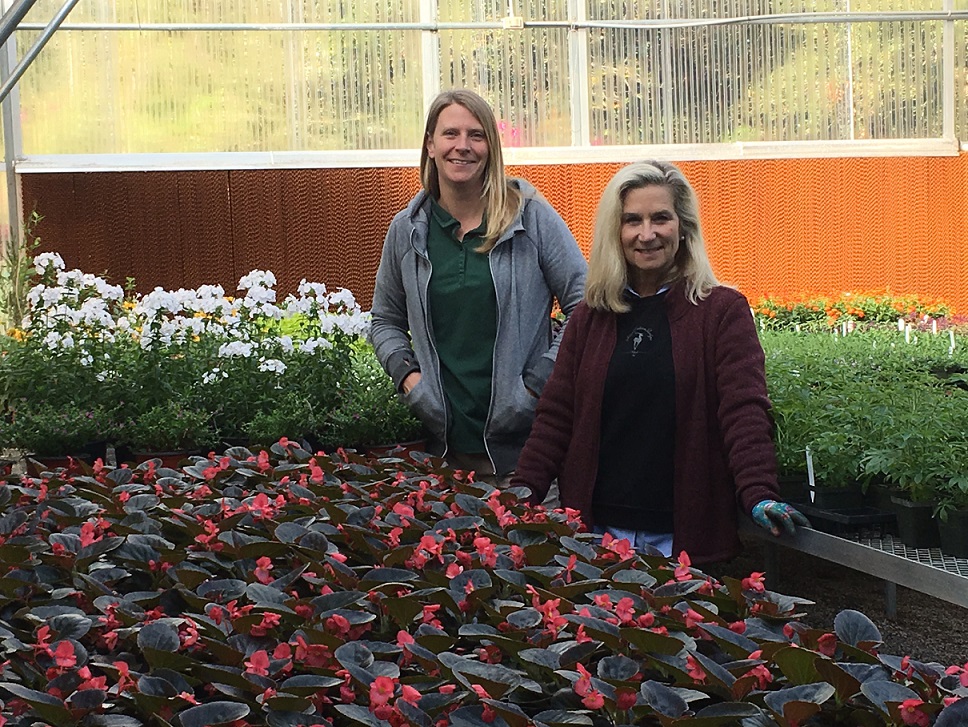
With so much to do, who takes care of all of this? Kerry Rapp, our Greenhouse and Nursery Supervisor leads the charge in managing everything greenhouse. Angela Pappas, our Greenhouse Assistant, helps Kerry. The rest of the greenhouse is fueled by a dedicated core of Horticulture volunteers, some of which you may have seen in images from our virtual tour. I hope you have enjoyed this trip through the Lachicotte Horticulture Complex and seeing all the stops our plants make before they come out to the gardens to greet you.
See you in the gardens!
Hours
Hours: Monday & Tuesday 9:30 AM - 5:00 PM
Wednesday - Sunday 4:00 PM - 9:00 PM
For daytime admission, gates close at 4:30 PM. For their safety and the safety of our animal collection, pets are not allowed, nor can they be left in vehicles inside Brookgreen. Service animals that have received special training to assist disabled persons are welcome.
Tickets
Daily General Admission Tickets for 7 consecutive days
Children 3 and under: Free
Children 4-12: $14
Adults 13-64: $25
Seniors 65 & Over: $23
Location
1931 Brookgreen Drive
Murrells Inlet, SC 29576
Off US Highway 17 Bypass, between Murrells Inlet and Pawleys Island on South Carolina's Hammock Coast
843-235-6000
GOOGLE DIRECTIONS